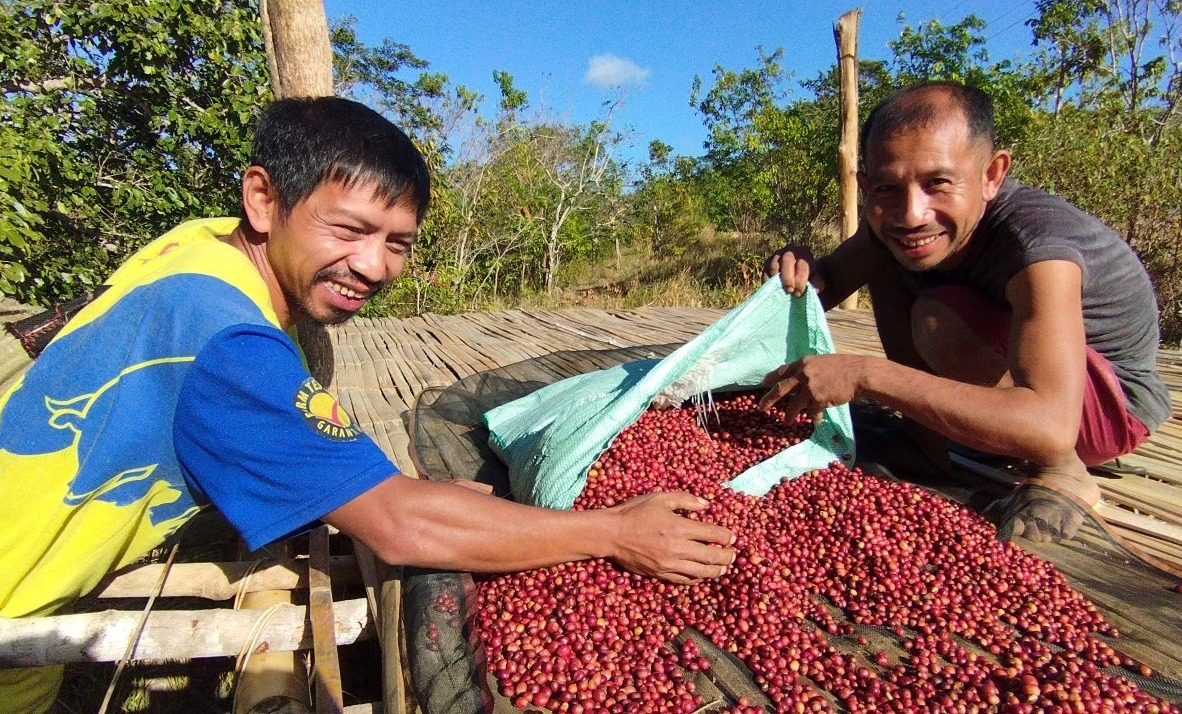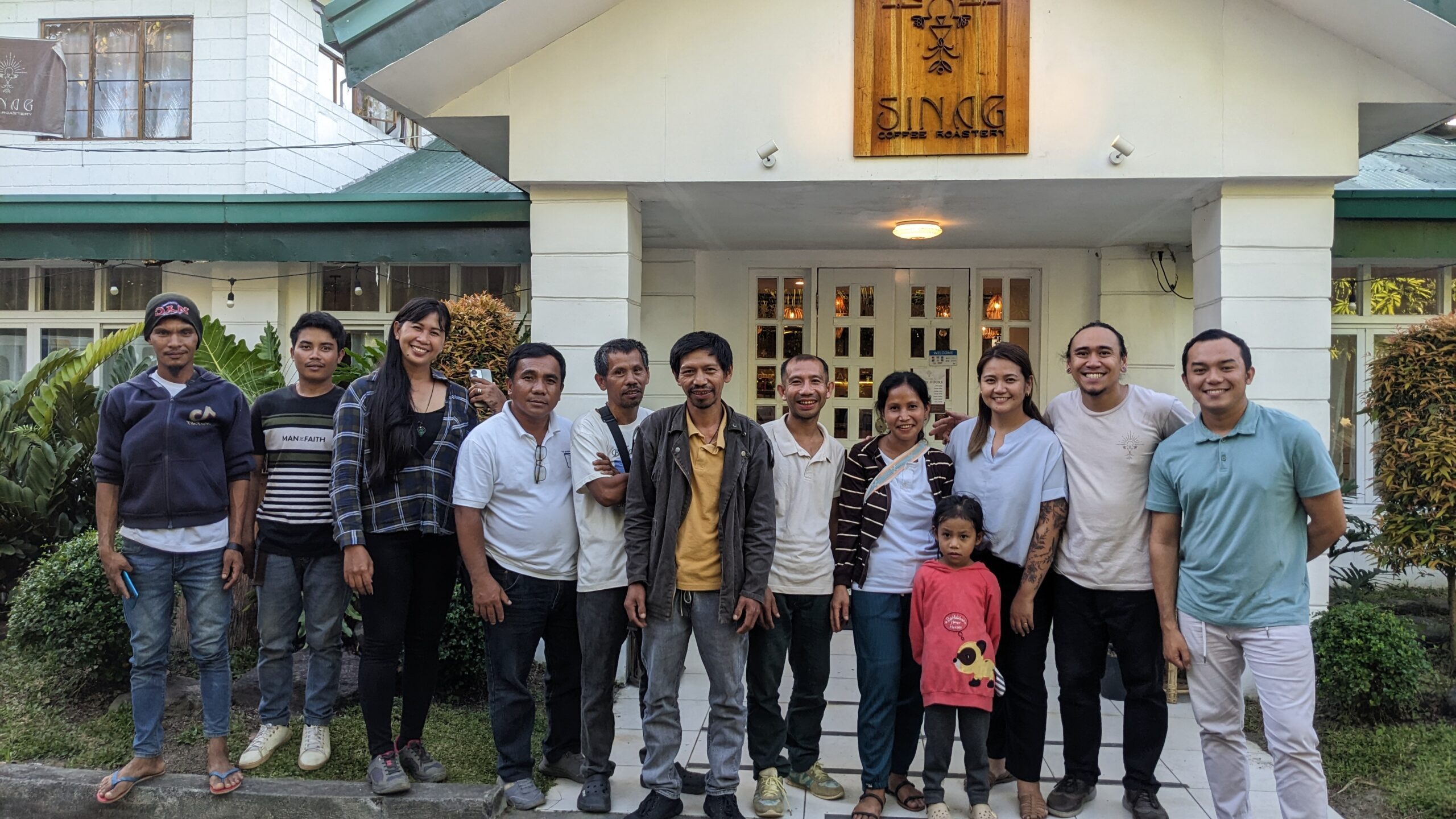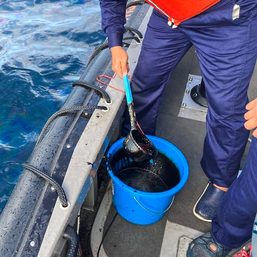SUMMARY
This is AI generated summarization, which may have errors. For context, always refer to the full article.

MANILA, Philippines – A coffee roastery in Calapan City, Oriental Mindoro works with the province’s indigenous coffee farmers to empower them in producing high-quality coffee cherries, making its way to be recognized as one of the Philippines’ finest single-origin coffees.
Sinag Coffee Roastery is Oriental Mindoro’s first coffee roastery and processing center, promoting coffee grounds sourced from the plantations of Mindoro’s Mangyan farmers and other coffee producers all around the Philippines.
Owners couple Paul and Ash Bañas, both 35, started as resellers of coffee products in 2014 and eventually owned a cafe in Manila, which was heavily marketed during the height of the COVID-19 pandemic through online orders.
Before entering the industry, the couple were volunteer nurses deployed in the remote communities of Mindoro in 2010. Despite the success of their cafe in the Metro, they decided to go back to the island and continue serving the Mangyans through the coffee business.
Since 2018, they have been scouting out local farmers in the province to be the main suppliers of their coffee cherries.
A family of Hanunuo Mangyan farmers from the town of Bulalacao was their first source of fresh cherries harvested from 50-year-old coffee trees. They provided them with supplies of Mindoro’s Robusta and Excelsa coffee varieties.
Since then, they have been also sourcing from the coffee farmers of the Alangan tribe of Naujan and Baco, which produce Liberica, the world’s rarest type of coffee.
These coffee cherries are then processed to be green coffee beans to be roasted and sold for brewing.
Empowering coffee farmers
According to Paul, the shop was named sinag (ray of sunlight) to represent hope for coffee farmers in reviving the local coffee business. “Pag-asa sa bawat tasa” (hope with every cup), he said, is what the roastery is aiming for to provide better opportunities for Filipino coffee farmers.
This was after the industry was challenged by lower production, climate change, and less empowerment of farmers in the coffee-making process. Instead of purchasing at lower prices, Sinag is buying coffee cherries from Mangyan farmers at a premium price or as high as the price of already-processed green coffee beans.

“We are buying the coffee with fair trade. We don’t want to aggrieve the farmers because they are the producers. We have to protect, and empower them so that the new coffee industry will continuously flourish and encourage the next generations because eventually, if they’ll be discouraged, we’ll not be having anyone to source coffee from,” he said in a mix of Filipino and English.
Advocating for better recognition of local coffee farmers, Paul, who is also among Mindoro’s first coffee processing professionals, wants to empower them by teaching proper farming practices and harvesting methods for gathering high-quality cherries.
“It’s already our responsibility if our coffees will be sold or not but we assure that the farmers who produced this coffee were paid well. So, we have to do our part in marketing the coffee in order for these farmers to expect sales every harvest season,” he said.
Sinag partnered with the Department of Trade and Industry (DTI) Mimaropa in launching their Mindoro Coffee on February 23. During the launch, DTI Mimaropa officer-in-charge Rodolfo Mariposque highlighted the importance of coffee-making culture in Mimaropa and the creation of a roadmap for the region’s striving coffee industry.
“DTI aims to assist the local coffee industry in the region by ensuring that the farmers, producers, and coffee drinkers participate in a cyclical (from bean to cup) culture of coffee lifestyle,” read a part of DTI’s report.
Mindoro coffee
The harvest season of coffee crops in Oriental Mindoro starts every December to March when three to four harvesting batches are done.
Instead of burning the coffee beans dark, Sinag roasts these Mindoro-made coffees in light to medium heat to highlight the fruit’s original flavors.
The Robusta coffee of Bulalacao is known for its sweet, chocolatey taste and well-balanced acidity compared to its typical bitter, earthy flavor. Its natural flavors are associated with hazelnut, vanilla, dark chocolate, and almond profiles.
The Liberica of Baco has winey origin flavors of sweetened banana and a hint of jackfruit while the one from Naujan is also associated with vanilla, ripe banana, brown sugar, jackfruit, and jasmine tea.
A coffee blend of the two is also available in the roastery for both espresso and filter roasts.
Just like other varieties of specialty coffee, Paul emphasized that these flavors are brought out from Mindoro coffee by applying good quality control in all stages of the coffee-making from the farming of Mangyans to the brewing of local coffee shops. –Rappler.com
Chris Burnet Ramos is a campus journalist from the Polytechnic University of the Philippines (PUP). A senior news writer for The Communicator, he is also an Aries Rufo Journalism fellow of Rappler for 2023-2024.
Add a comment
How does this make you feel?




















There are no comments yet. Add your comment to start the conversation.